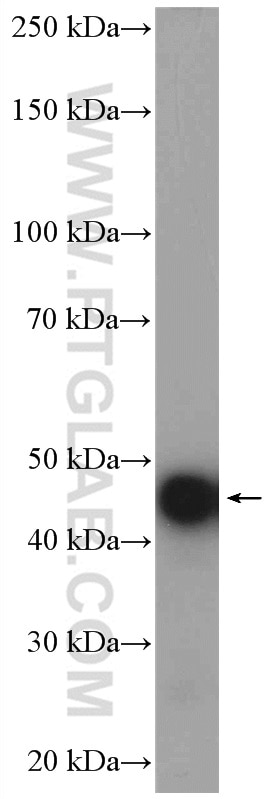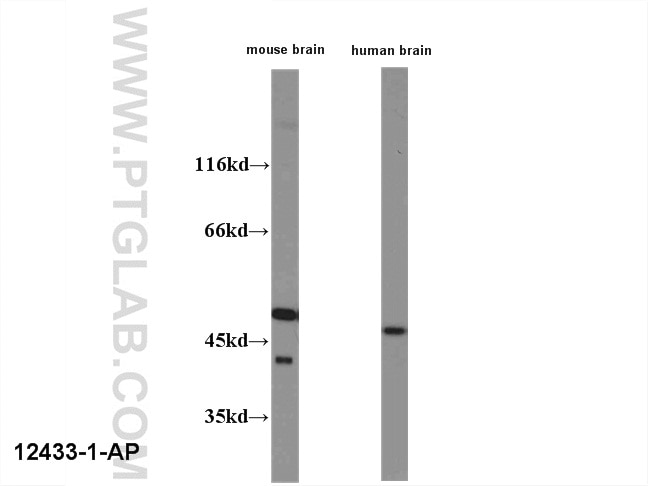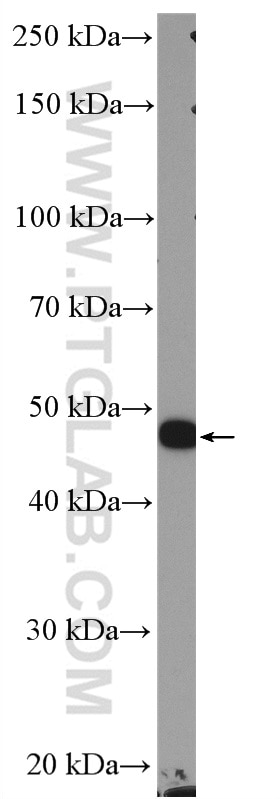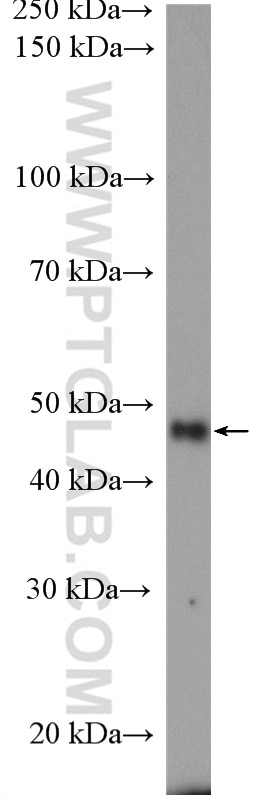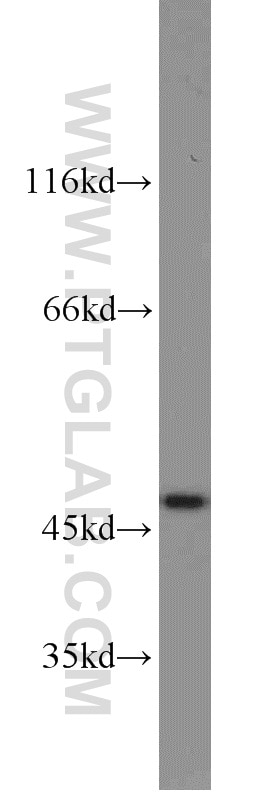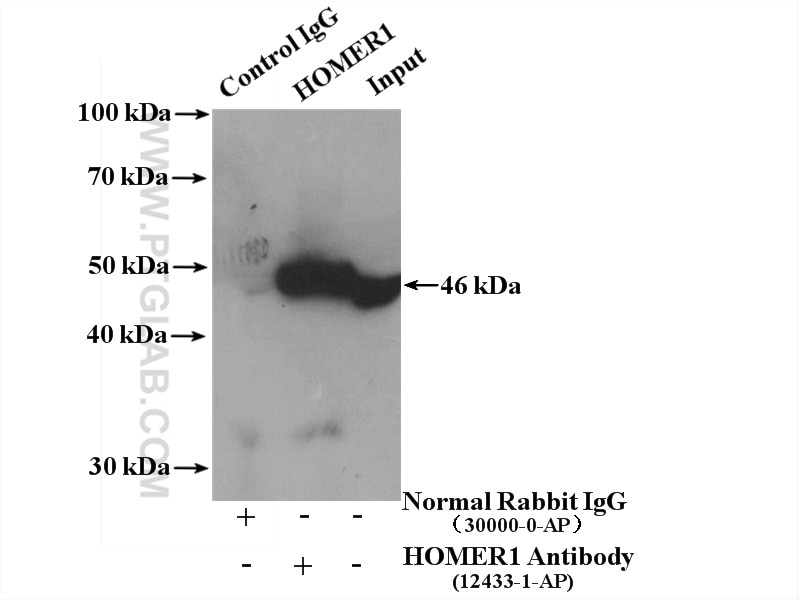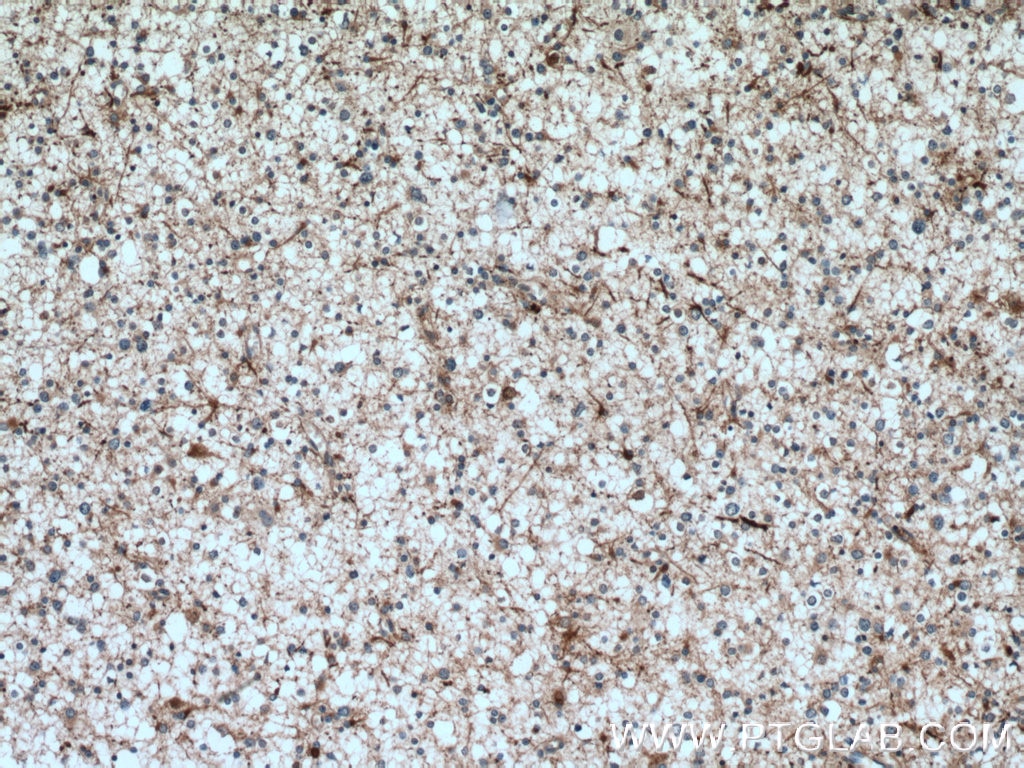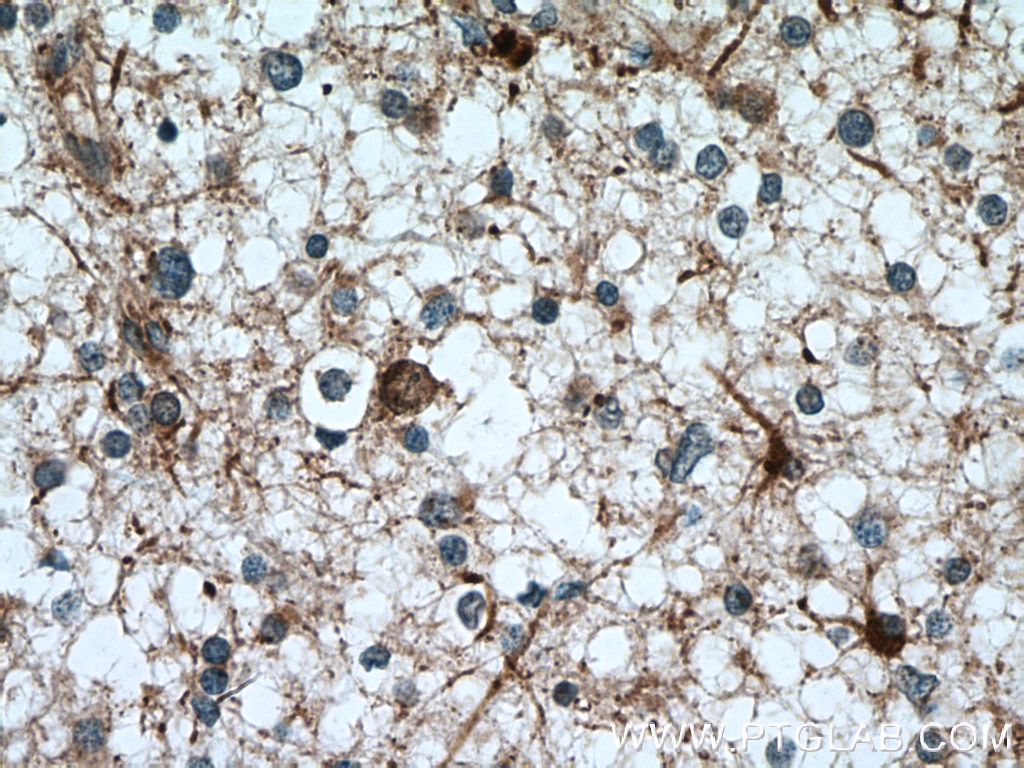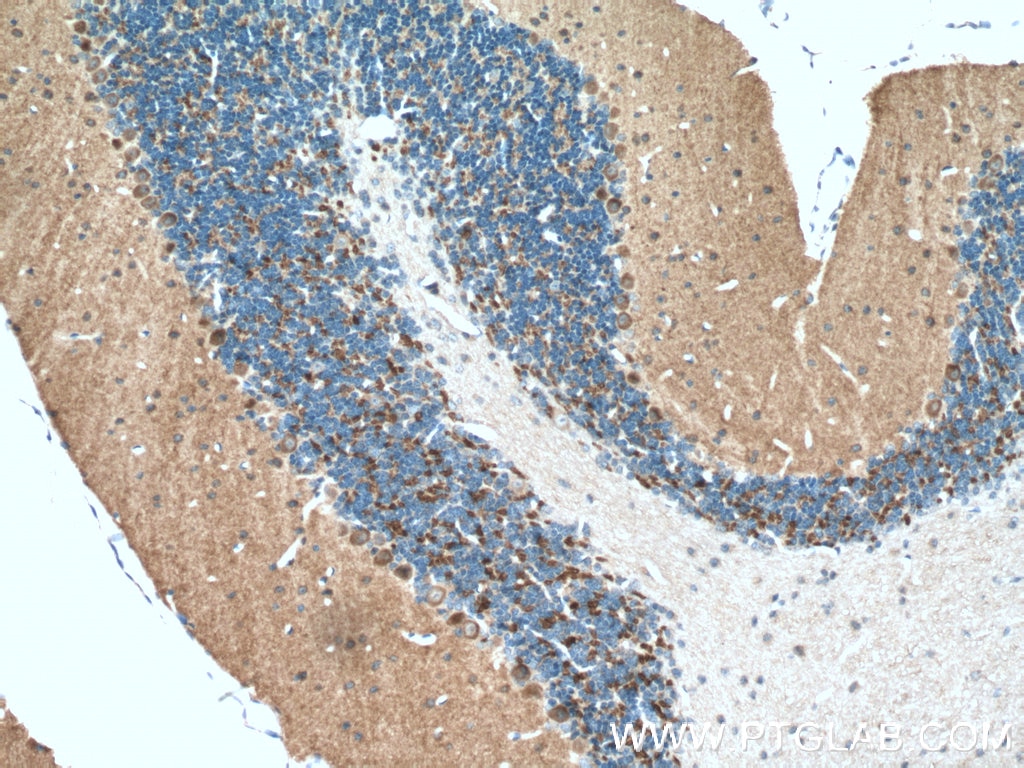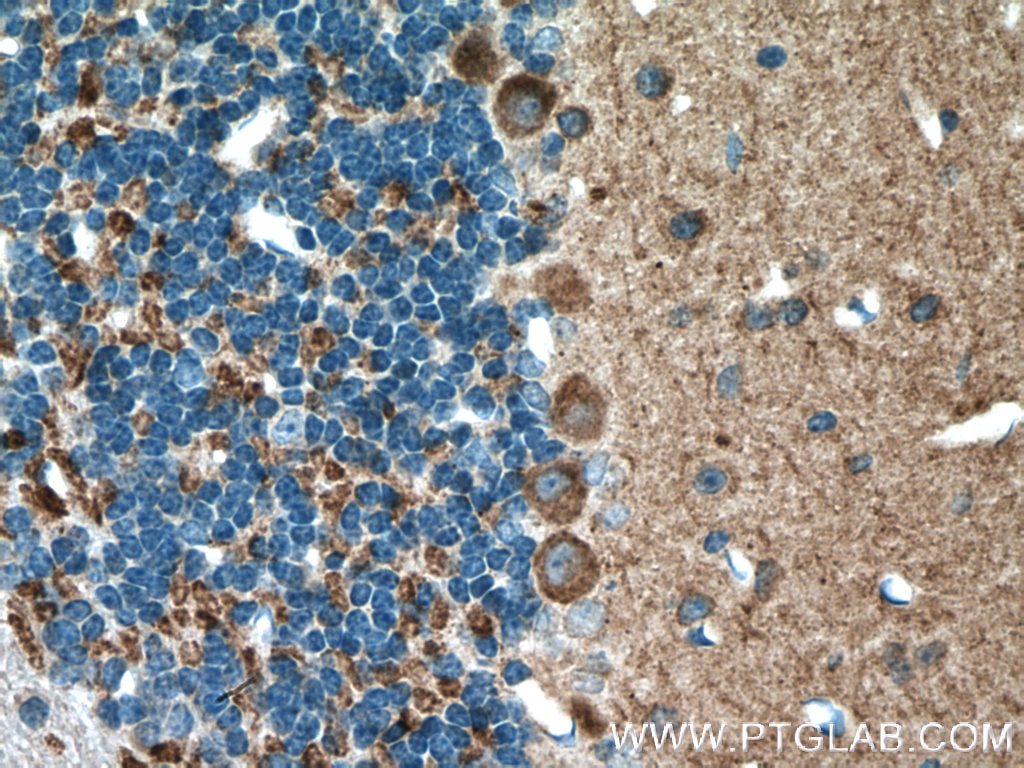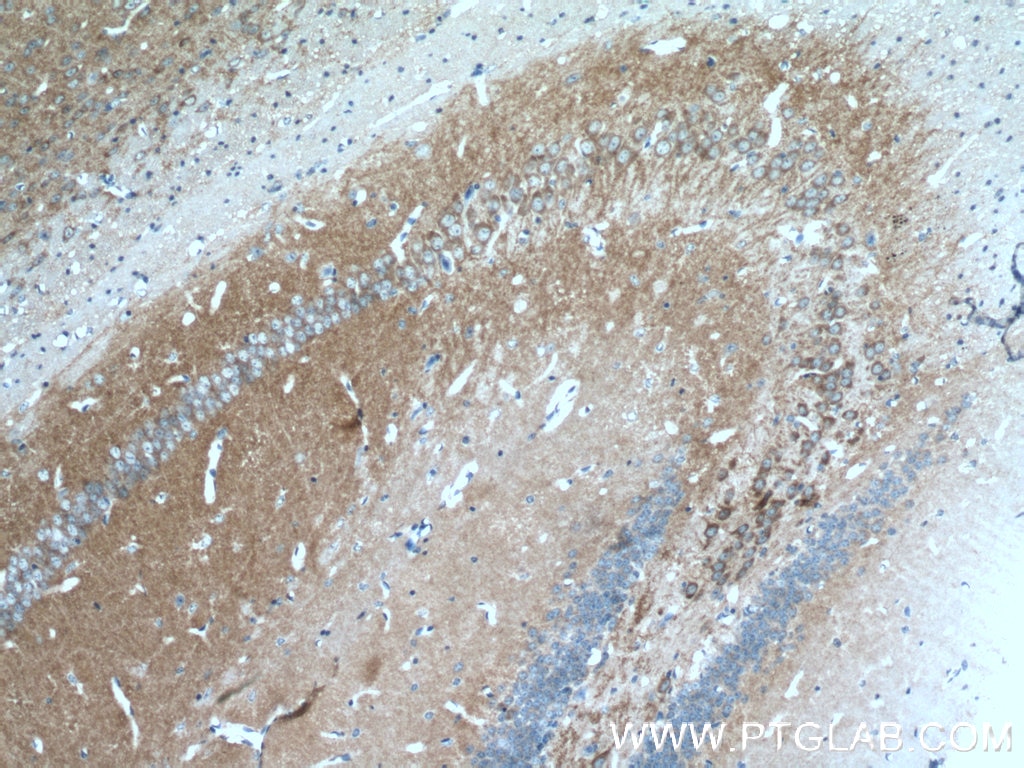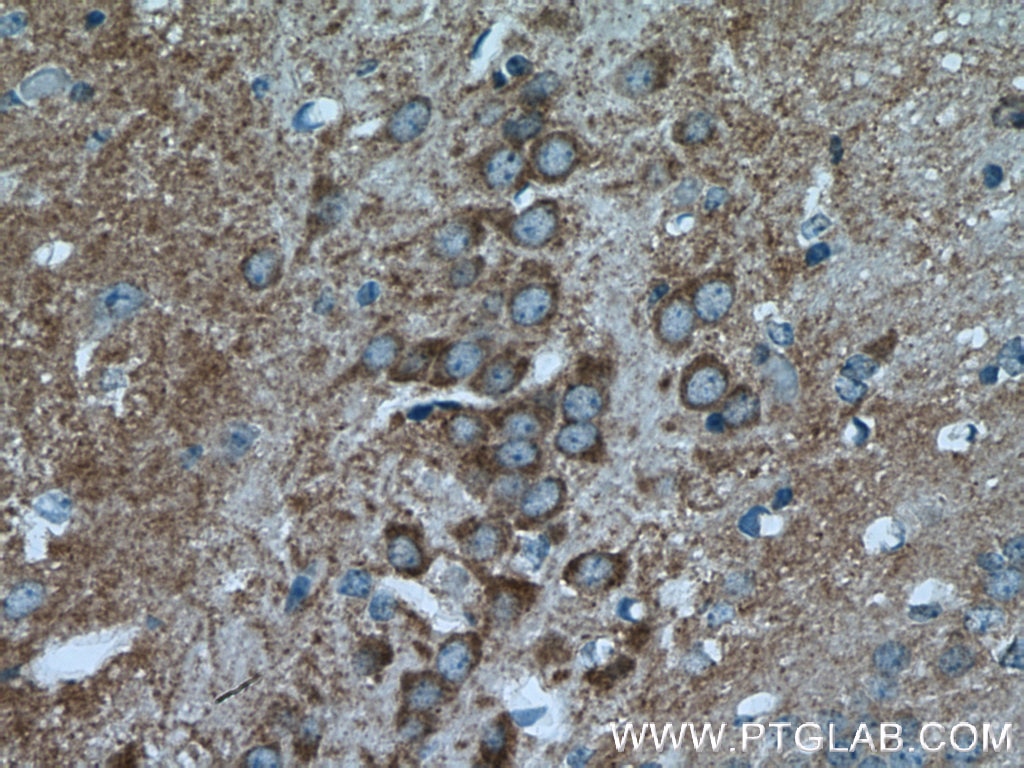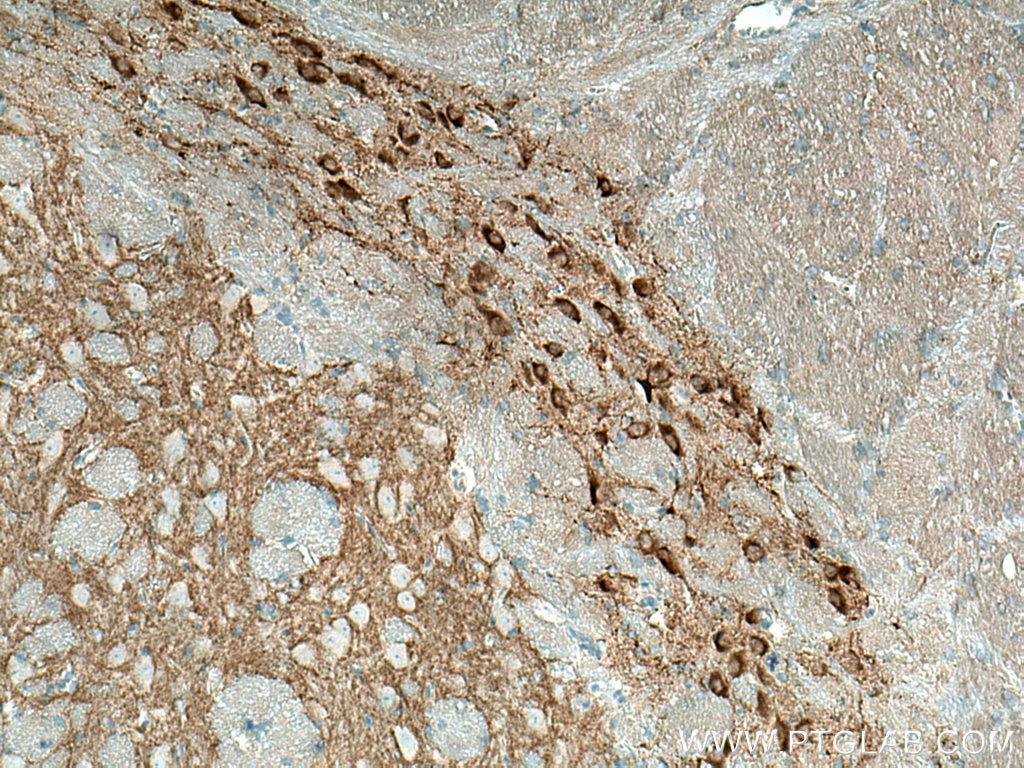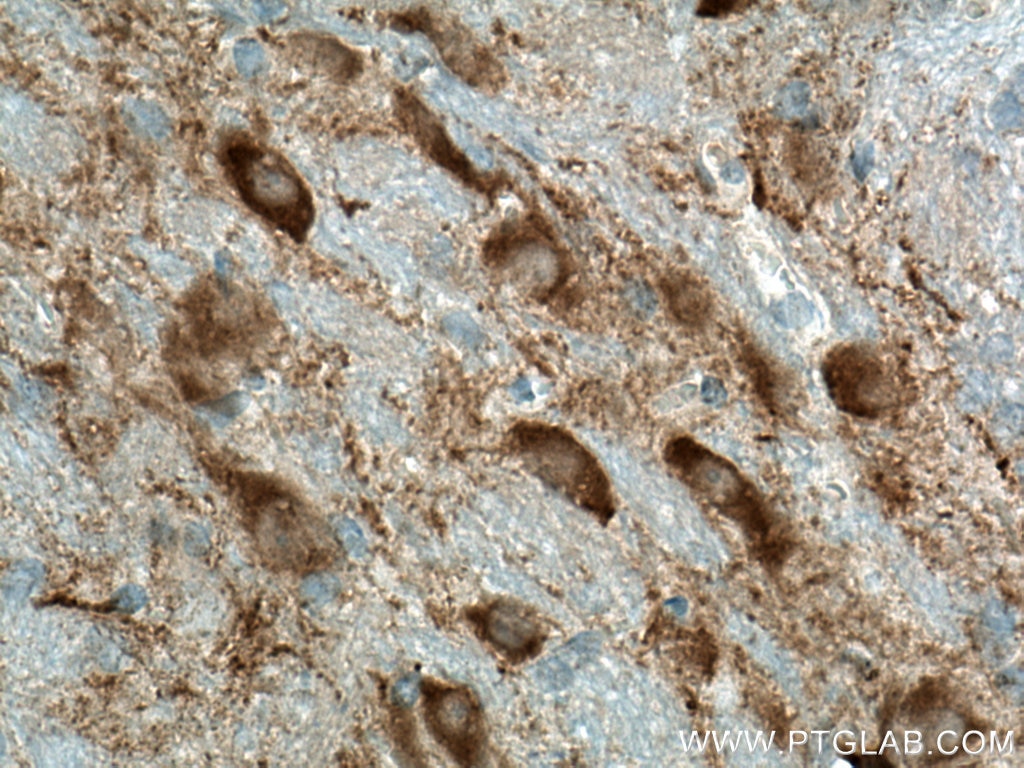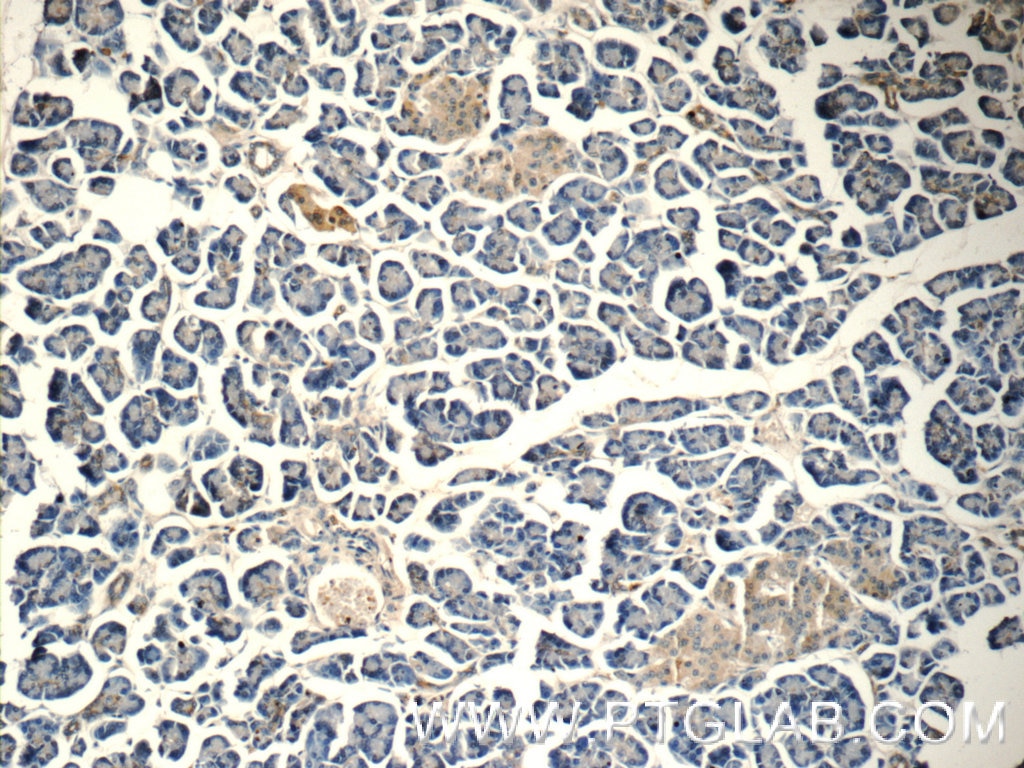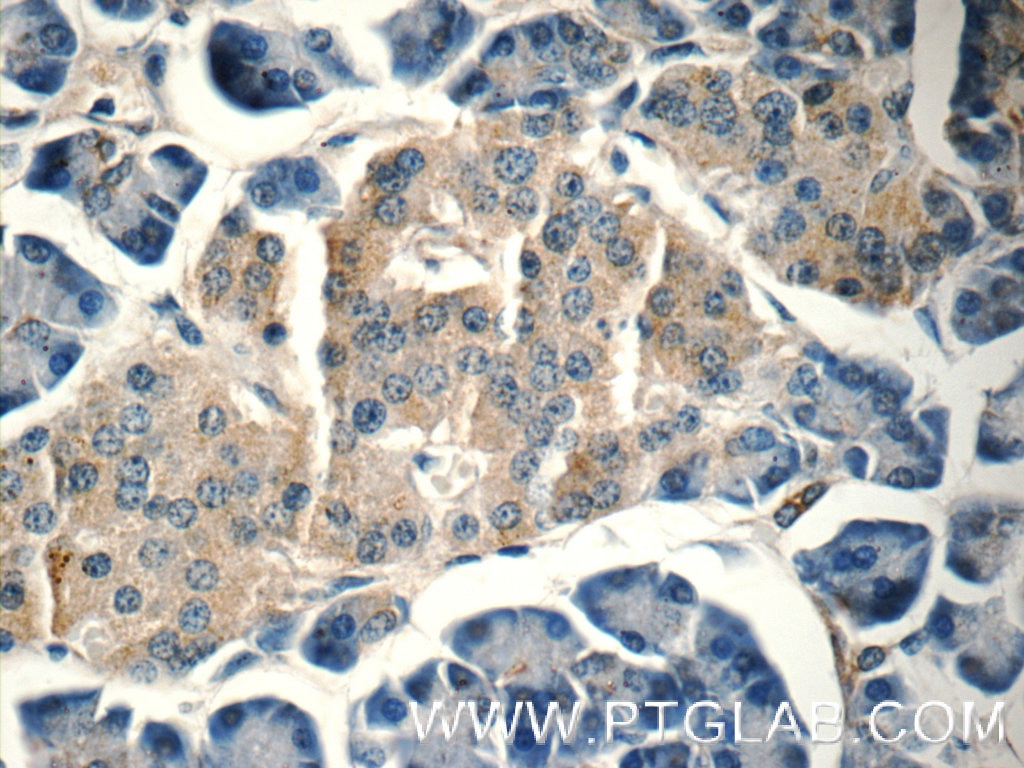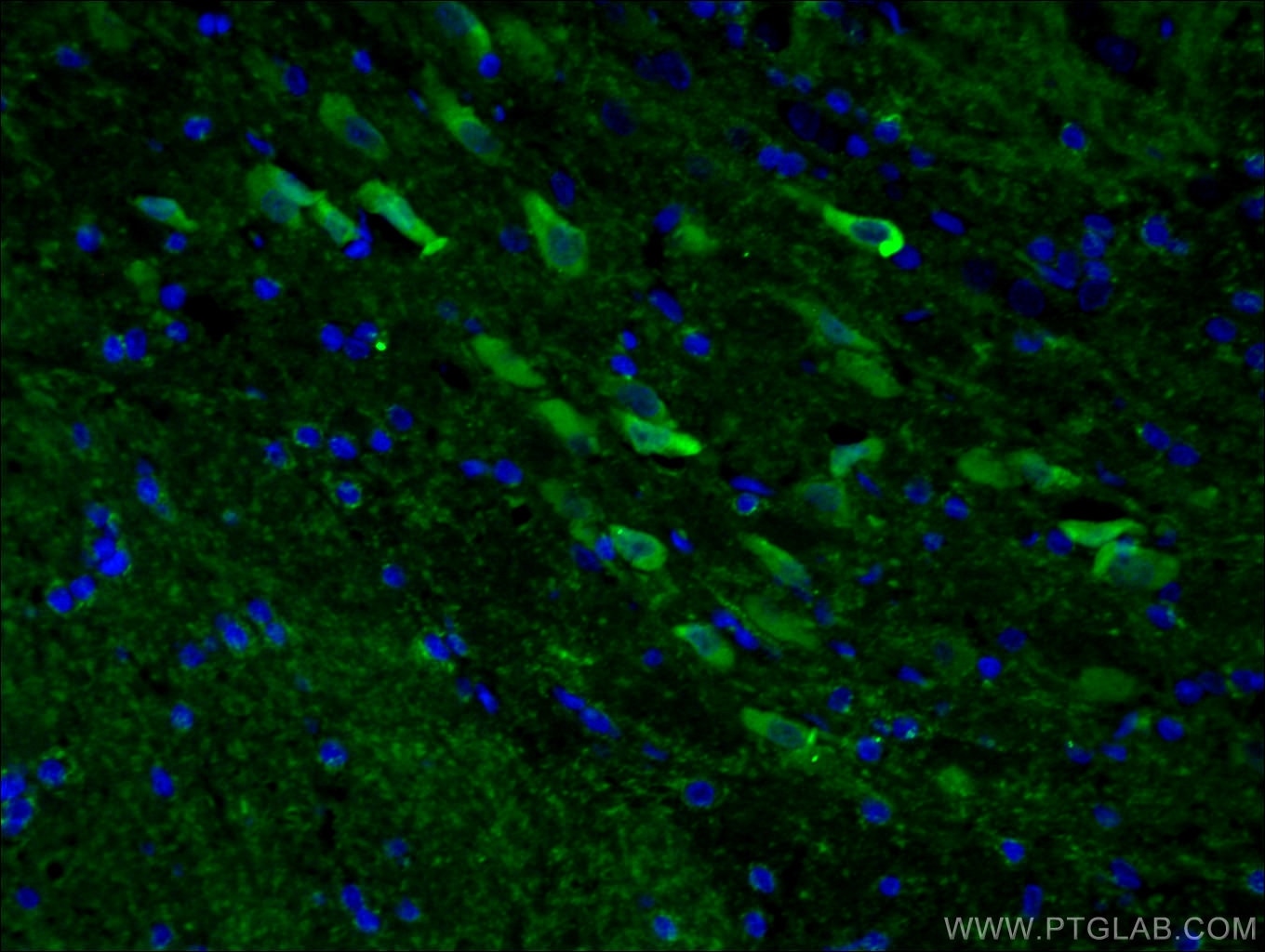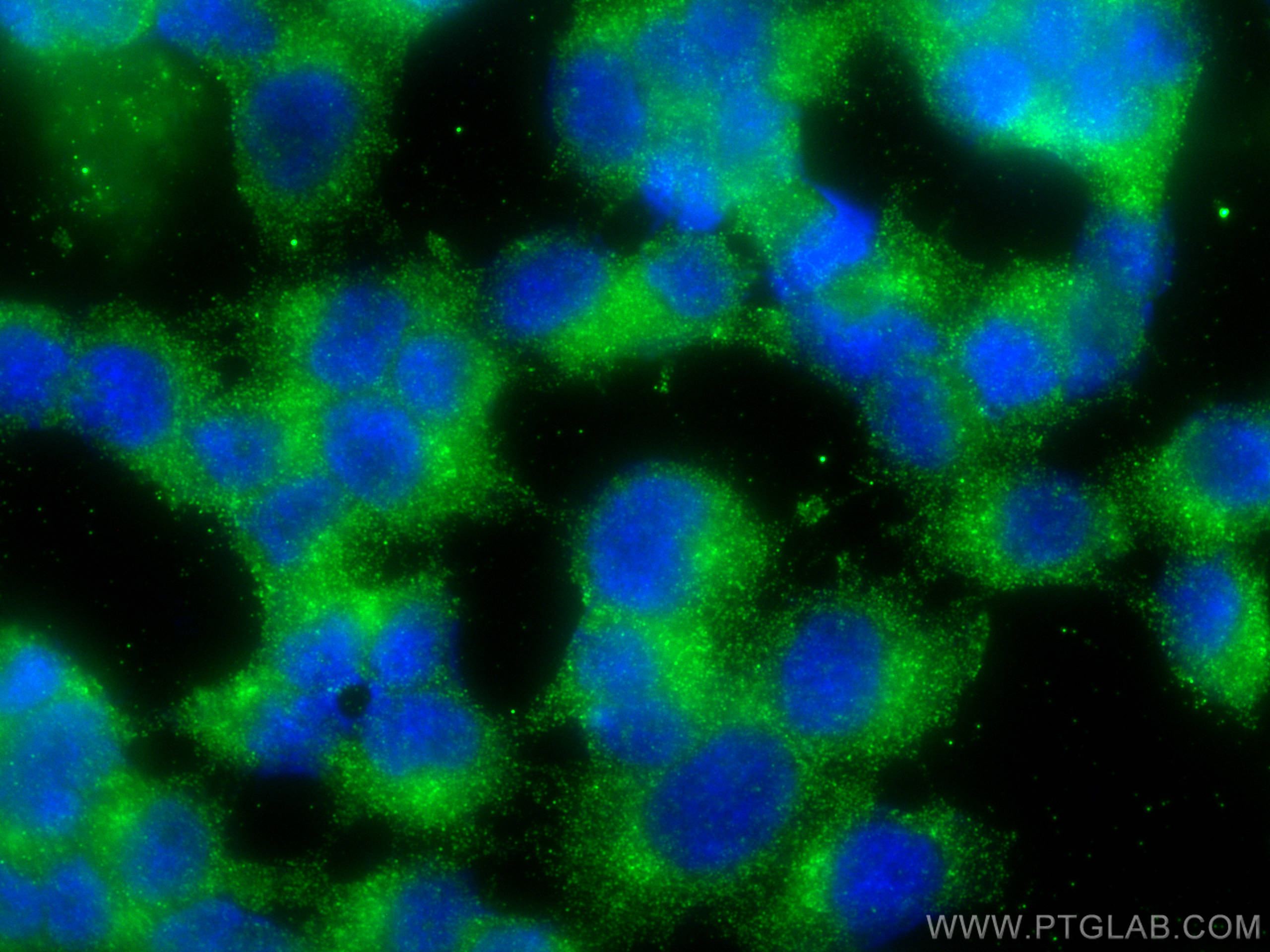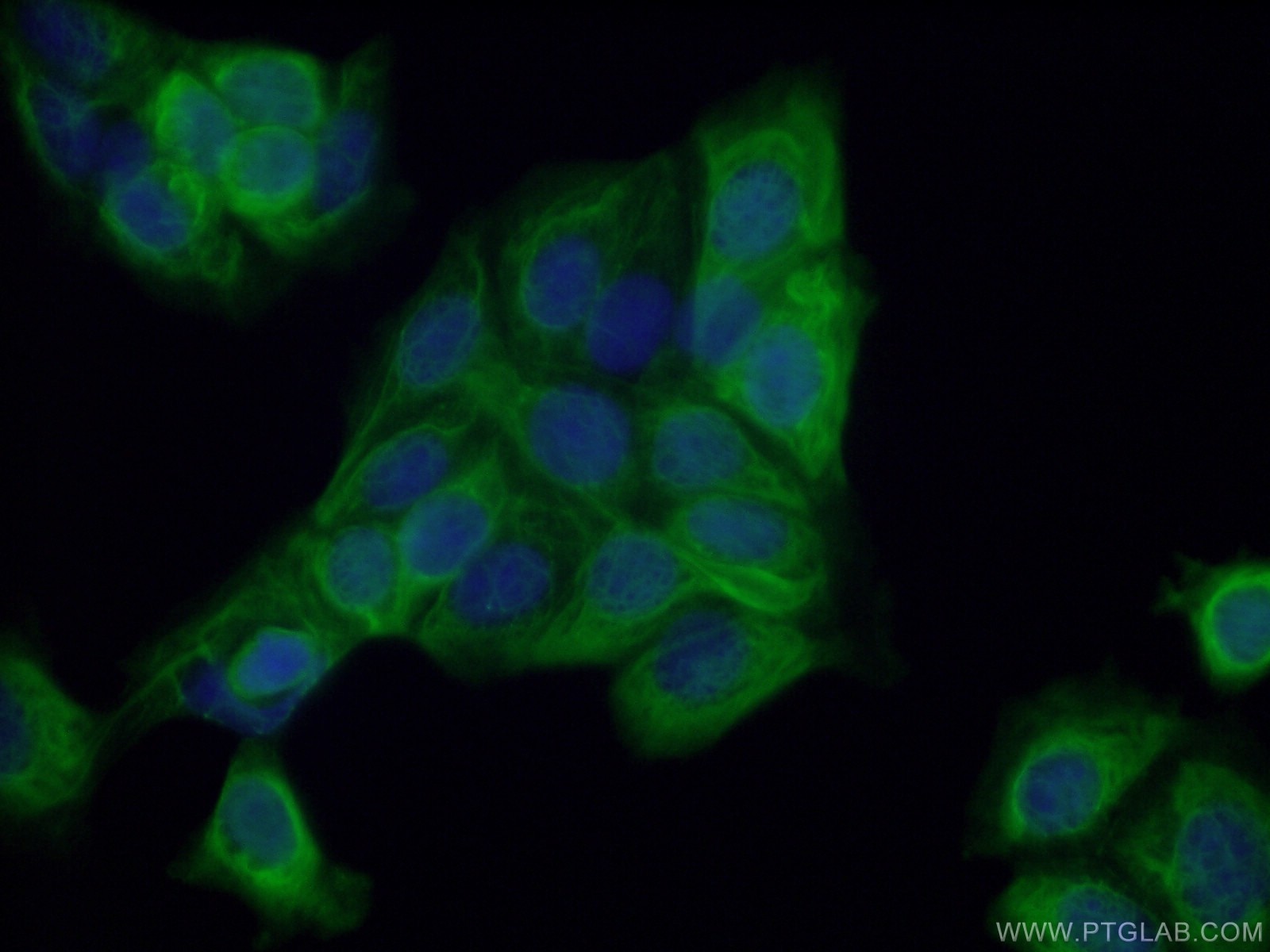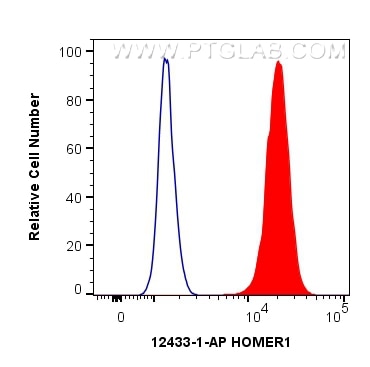- Featured Product
- KD/KO Validated
HOMER1 Polyklonaler Antikörper
HOMER1 Polyklonal Antikörper für WB, IHC, IF/ICC, IF-P, FC (Intra), IP, ELISA
Wirt / Isotyp
Kaninchen / IgG
Getestete Reaktivität
human, Maus, Ratte
Anwendung
WB, IHC, IF/ICC, IF-P, FC (Intra), IP, ELISA
Konjugation
Unkonjugiert
Kat-Nr. : 12433-1-AP
Synonyme
Geprüfte Anwendungen
| Erfolgreiche Detektion in WB | Rattenhirngewebe, humanes Hirngewebe |
| Erfolgreiche IP | fetales humanes Hirngewebe |
| Erfolgreiche Detektion in IHC | humanes Gliomgewebe, humanes Pankreasgewebe, Maushirngewebe, Rattenhirngewebe Hinweis: Antigendemaskierung mit TE-Puffer pH 9,0 empfohlen. (*) Wahlweise kann die Antigendemaskierung auch mit Citratpuffer pH 6,0 erfolgen. |
| Erfolgreiche Detektion in IF-P | Rattenhirngewebe |
| Erfolgreiche Detektion in IF/ICC | PC-12-Zellen, MCF-7-Zellen |
| Erfolgreiche Detektion in FC (Intra) | SH-SY5Y-Zellen |
Empfohlene Verdünnung
| Anwendung | Verdünnung |
|---|---|
| Western Blot (WB) | WB : 1:1000-1:5000 |
| Immunpräzipitation (IP) | IP : 0.5-4.0 ug for 1.0-3.0 mg of total protein lysate |
| Immunhistochemie (IHC) | IHC : 1:50-1:500 |
| Immunfluoreszenz (IF)-P | IF-P : 1:50-1:500 |
| Immunfluoreszenz (IF)/ICC | IF/ICC : 1:200-1:800 |
| Durchflusszytometrie (FC) (INTRA) | FC (INTRA) : 0.40 ug per 10^6 cells in a 100 µl suspension |
| It is recommended that this reagent should be titrated in each testing system to obtain optimal results. | |
| Sample-dependent, check data in validation data gallery | |
Veröffentlichte Anwendungen
| KD/KO | See 1 publications below |
| WB | See 13 publications below |
| IHC | See 2 publications below |
| IF | See 7 publications below |
Produktinformation
12433-1-AP bindet in WB, IHC, IF/ICC, IF-P, FC (Intra), IP, ELISA HOMER1 und zeigt Reaktivität mit human, Maus, Ratten
| Getestete Reaktivität | human, Maus, Ratte |
| In Publikationen genannte Reaktivität | Maus, Ratte |
| Wirt / Isotyp | Kaninchen / IgG |
| Klonalität | Polyklonal |
| Typ | Antikörper |
| Immunogen | HOMER1 fusion protein Ag3109 |
| Vollständiger Name | homer homolog 1 (Drosophila) |
| Berechnetes Molekulargewicht | 40 kDa |
| Beobachtetes Molekulargewicht | 46-48 kDa |
| GenBank-Zugangsnummer | BC015502 |
| Gene symbol | HOMER1 |
| Gene ID (NCBI) | 9456 |
| Konjugation | Unkonjugiert |
| Form | Liquid |
| Reinigungsmethode | Antigen-Affinitätsreinigung |
| Lagerungspuffer | PBS with 0.02% sodium azide and 50% glycerol |
| Lagerungsbedingungen | Bei -20°C lagern. Nach dem Versand ein Jahr lang stabil Aliquotieren ist bei -20oC Lagerung nicht notwendig. 20ul Größen enthalten 0,1% BSA. |
Hintergrundinformationen
Human HOMER1, also named as SYN47, belongs to the Homer family. Human HOMER1 has some isoforms: HOMER1a, HOMER1b, HOMER1c, HOMER1e and HOMER1h. Mouse Homer1 also named as Vesl-1 and it has some isoforms: Vesl-1l, Vesl-1m, Vesl-1s, Homer1b, and Homer1d. HOMER1 is a postsynaptic density scaffolding protein. It is a neuronal immediate-early gene (IEG) that is enriched at excitatory synapses and binds mGluRs. In WB, the MW of HOMER1 is about 46-50kd, 40-43kd and 20-26kd.
Protokolle
| PRODUKTSPEZIFISCHE PROTOKOLLE | |
|---|---|
| WB protocol for HOMER1 antibody 12433-1-AP | Protokoll herunterladen |
| IHC protocol for HOMER1 antibody 12433-1-AP | Protokoll herunterladenl |
| IF protocol for HOMER1 antibody 12433-1-AP | Protokoll herunterladen |
| IP protocol for HOMER1 antibody 12433-1-AP | Protokoll herunterladen |
| STANDARD-PROTOKOLLE | |
|---|---|
| Klicken Sie hier, um unsere Standardprotokolle anzuzeigen |
Publikationen
| Species | Application | Title |
|---|---|---|
Mol Psychiatry A recurrent SHANK1 mutation implicated in autism spectrum disorder causes autistic-like core behaviors in mice via downregulation of mGluR1-IP3R1-calcium signaling. | ||
PLoS Genet Cell fate specification in the lingual epithelium is controlled by antagonistic activities of Sonic hedgehog and retinoic acid. | ||
Aging (Albany NY) Liraglutide preconditioning attenuates myocardial ischemia/ reperfusion injury via homer1 activation.
| ||
J Neurosci Cortex-specific Tmem169 Deficiency Induces Defects in Cortical Neuron Development and Autism-like Behaviors in Mice | ||
CNS Neurosci Ther Acid-sensing Ion Channels Activation and Hypoxia Upregulate Homer1a Expression. |
Rezensionen
The reviews below have been submitted by verified Proteintech customers who received an incentive for providing their feedback.
FH Olga (Verified Customer) (09-12-2025) | Nice specific signal in mouse brain, primary neurons and Neuro2A cell line. However, some additional non-specific bands also present.
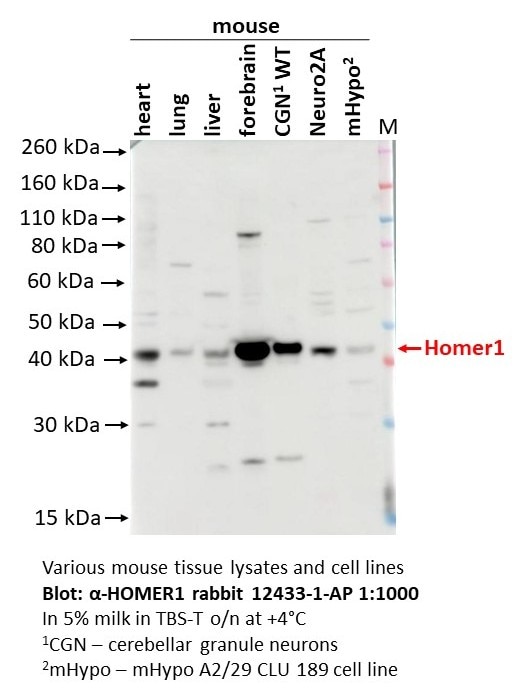 |
